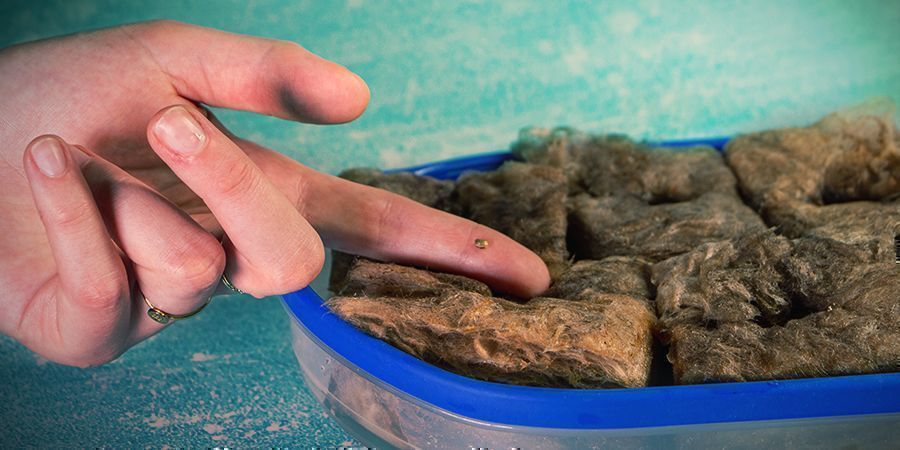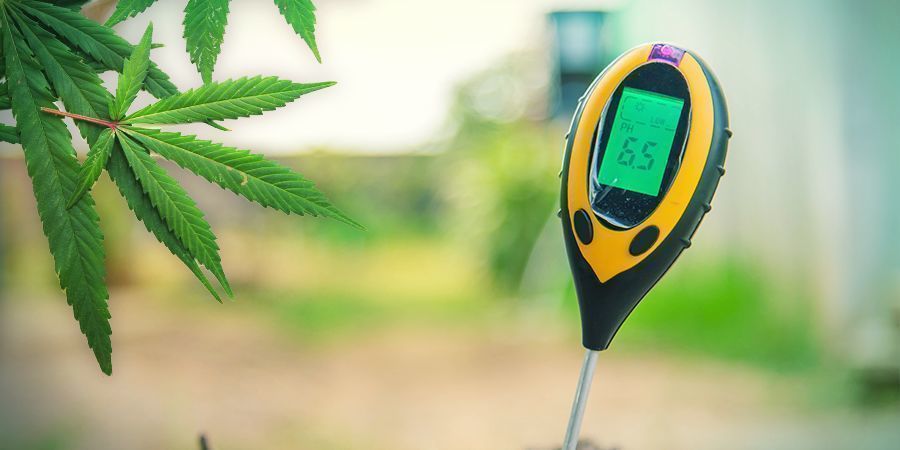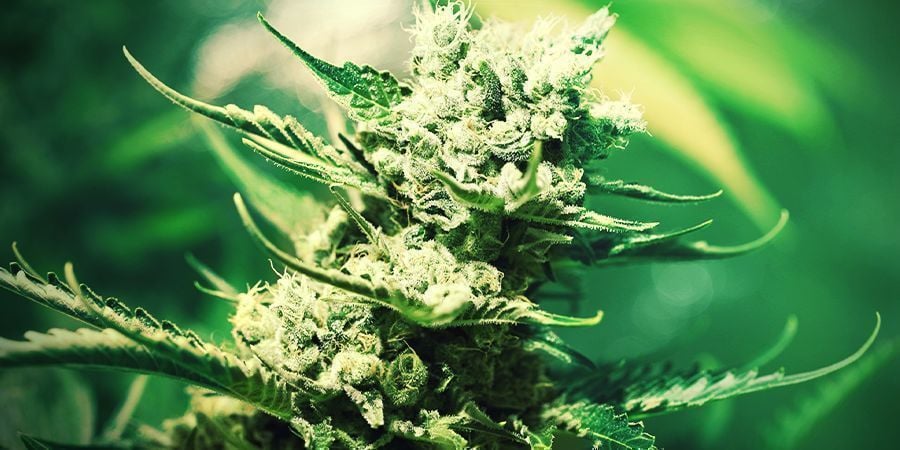Everything You Need About Growing Cannabis In Rockwool
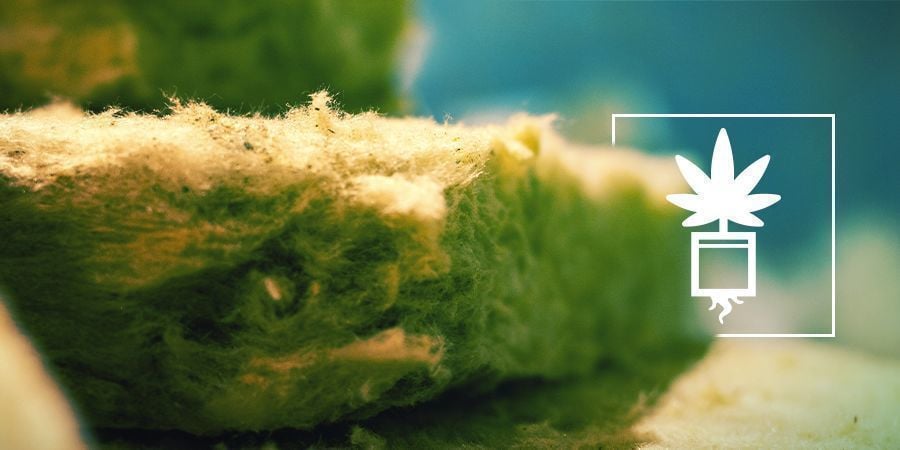
This guide covers the basics of growing cannabis in rockwool, from germination all the way to fabulous, fat flowers. Don't be intimidated by this tried and true hydroponic substrate.
GROWING CANNABIS IN ROCKWOOL
Rockwool, stone wool, or mineral wool has been the hydroponic substrate of choice for a number of decades. Beginning its life in general hydroponic horticulture, it proved to be an excellent medium for growing all sorts of plants. It was only natural then for existing methods to translate over into the world of weed.
“Rockwool” is one of those trademarks that went on to become the generic term for this type of product. Just like Velcro or Aspirin, which are also trademarks, Rockwool is used to describe most products under this umbrella, and often drops the capital "R"—much to the chagrin of the trademark holders.
Rockwool was first produced commercially by the Danish company Rockwool in the late 1930s. It is an industrial method of mimicking a naturally occurring substance called Pele’s hair, which is produced when wind blows through molten lava.
When it's produced artificially, air is forced through a stream of molten basalt slag. The resulting “wool” is then pressed into different densities for different purposes. It can be used for sound/thermal insulation, and with its custom density, is ideal for growing plants hydroponically.
The modular nature of rockwool means never having to disturb the root systems of plants. The small cubes neatly fit into the next size cube up and so forth, with the final position usually being a large slab that contains a number of plants. Rockwool is highly absorbent and retains water very well. The loose structure presents virtually no resistance to roots, allowing for very efficient plants.
These top tips for growing in rockwool will make sure your indoor grow is successful.
1. PREPARATION
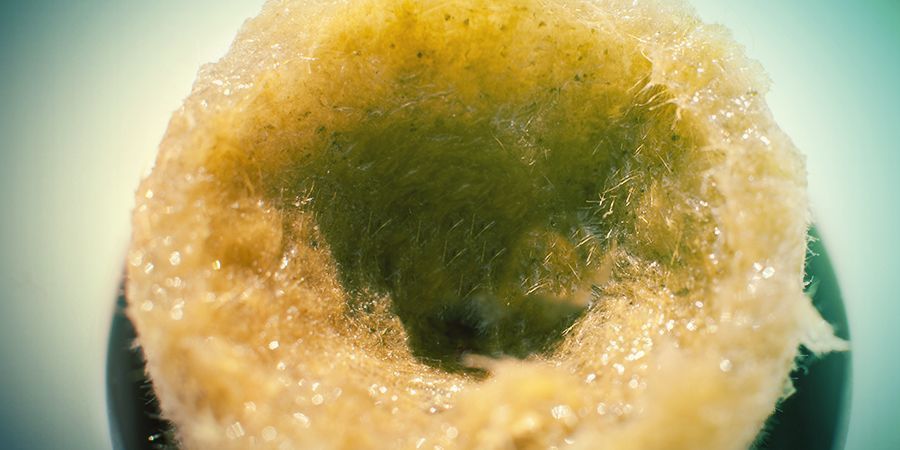
Rockwool needs to be stabilised and prepared before using it to grow cannabis. Untreated, it has a pH of 7.0, which is too alkaline for healthy cannabis growth, as there are no naturally occurring buffers like with soil. When the substrate is too alkaline, there is poor nutrient uptake, especially of essential compounds like calcium and magnesium.
Soak the rockwool for 24 hours in a nutrient solution corrected to a pH of 4.5 with an EC of 0.4–0.5. This range will make sure that young plants get off to a solid start with no nutrient deficiencies.
To check if the rockwool is stabilised at the correct pH, drench with a 5.5 pH nutrient solution and test the runoff water with a pH meter. If the runoff remains at 5.5, the substrate is ready for use; if it is still too high, re-soak for a few hours and then test again.
2. GERMINATION
Rockwool doesn’t require any specialised germination techniques, and the tried and true paper towel method works just fine. Put seeds between two layers of damp paper towel on a plate and cover with a second plate. Leave in a dark, warm place until seeds split and the taproot emerges.
Gently insert the sprouted seed in a prepared rockwool cube and place under propagation lights for early vegetation. The well-fed sprout will quickly appear, and the cotyledons will shed the seed husk and spread, soon to be followed by the first set of true leaves.
Once young plants are established in their small rockwool cubes, they can be transplanted into the next size of properly prepared cube. Being careful not to damage any visible roots, gently press the small cube into the larger one to ensure a tight fit with no air pockets. Plants are now ready for exposure to full artificial light in a grow room.
3. CLONING AND ROOTING CUTTINGS
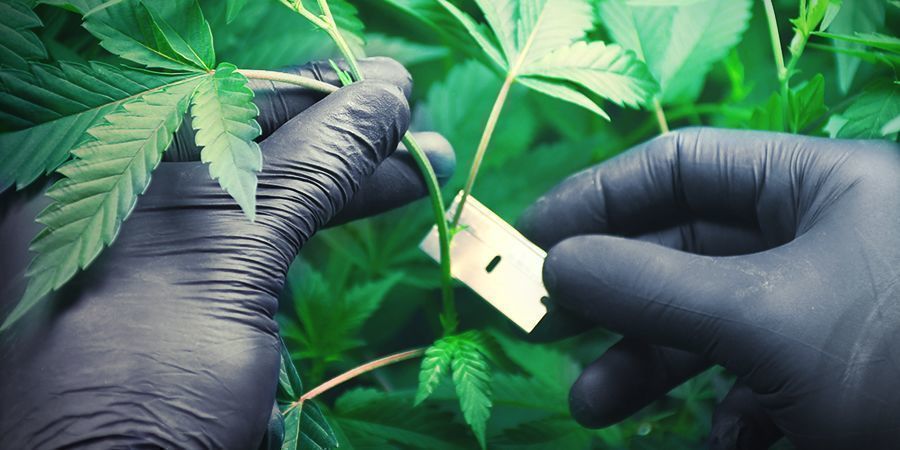
The process of making cuttings and rooting them in rockwool is the same as with any other method like jiffies, peat moss, or coir.
Place cuttings into properly prepared rockwool cubes (as above). The cubes should be damp, but not wet so as to avoid stem rot and slow striking speeds.
Keep cuttings in a high humidity environment like a domed tray and regularly mist lightly with water. Once cuttings strike, lower the humidity for a few days, then remove the cover to harden them off before transplanting.
4. GROWING IN ROCKWOOL
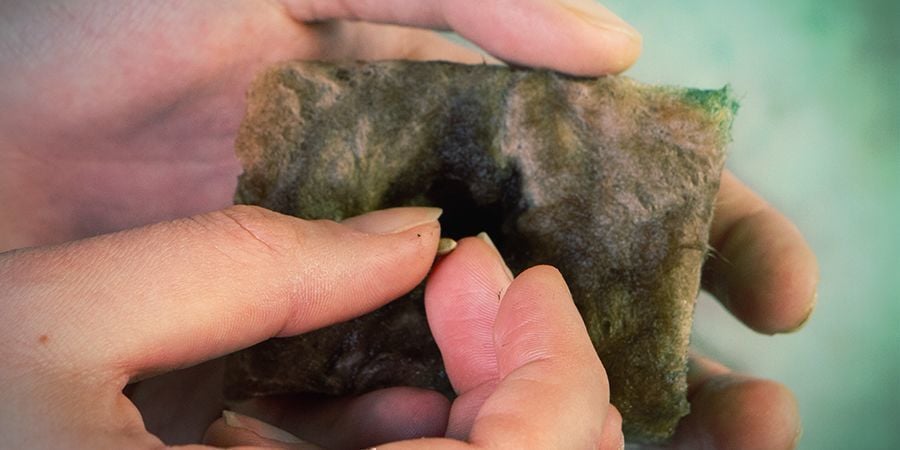
An automatic irrigation system is ideal for rockwool. The material is highly absorbent and distributes nutrient solutions evenly throughout the root zone before settling at the bottom. This moisture gradient is what makes rockwool such an ideal substrate for hydroponics.
Hand watering is okay, but be prepared for multiple visits to the grow room per day, and be careful not to overdo it.
Plants sit in a shallow film of nutrient solution 2–3mm deep. Rockwool should be at medium saturation levels in the very lower layers, and drier in the upper layers.
Lower roots feed from the film of nutrient solution, while upper roots are exposed to moist air and all the oxygen they can get for healthy transpiration. Rockwool is not supposed to be wet like a sponge, as this is the equivalent of submerging roots, which will kill the plant.
Rockwool can also be used to hold plants for DWC, and there is little salt buildup since at each irrigation, fresh solution forces old salts out and draws down more fresh air into the medium. At all stages, watch plants for any kinds of nutrient stresses and adjust nutrient solutions accordingly.
5. VEGETATION
The rockwool is stabilised at 5.5 pH and with an EC of 0.4–0.5. During the early stages of vegetation, when plants are still small, irrigate for one minute to apply 60–70ml of nutrient solution twice per day. Once when the lights come on, then again halfway through the light cycle. This facilitates root growth and prevents water logging.
Watch plants for changes in nutrient demand as they grow and increase the amount of solution per plant as they get bigger. Continue this regime until the first week of flowering.
6. FLOWERING
• Week 1
Swap to a flowering nutrient and gradually increase pH over a week from 5.5 to 5.8–5.9.
• Weeks 2 & 3
Increase the EC to 0.8–0.9 and the pH to 6.0. Increase the frequency of watering from twice a day to three times per day. Irrigate for two minutes when the lights come on, then for one minute six hours later, and for one minute prior to turning lights off.
• Weeks 4 & 5
Increase the EC to 1.0–1.2 and fluctuate the pH between 6.0 and 6.2 to ensure complete nutrient uptake. Increase frequency of watering to four times per day. Irrigate for two minutes at the beginning of the day, then for one minute at hours four and eight, then for two minutes again before the lights go off.
• Week 6
Increase EC to 1.4 and keep pH fluctuating between 6.0 and 6.2. Increase frequency of watering to six times per day. Irrigate for two minutes at the beginning and end of the day, and for one minute at regular intervals in between.
• Week 7
EC can be increased from 1.4 up to 1.6–1.7, and fluctuations in pH can rise to between 6.0 to 6.3. Keep the irrigation frequency the same as in week 6.
• Week 8
Continue as per week 7. Depending on specific strain demands, EC can be increased to 1.8.
• Weeks 9 & 10
Depending on strain, it is the last week of flowering for cannabis. Reduce EC to as low as possible and keep pH at 6.2. Keep irrigation frequency the same, but increase to two minutes at every watering.
During the final week is the time to thoroughly flush your cannabis with a flushing product to remove all excess salt buildup from the root zone. Flushing improves the final aroma and flavour of the flowers prior to harvest.
7. CAN ROCKWOOL BE RECYCLED?
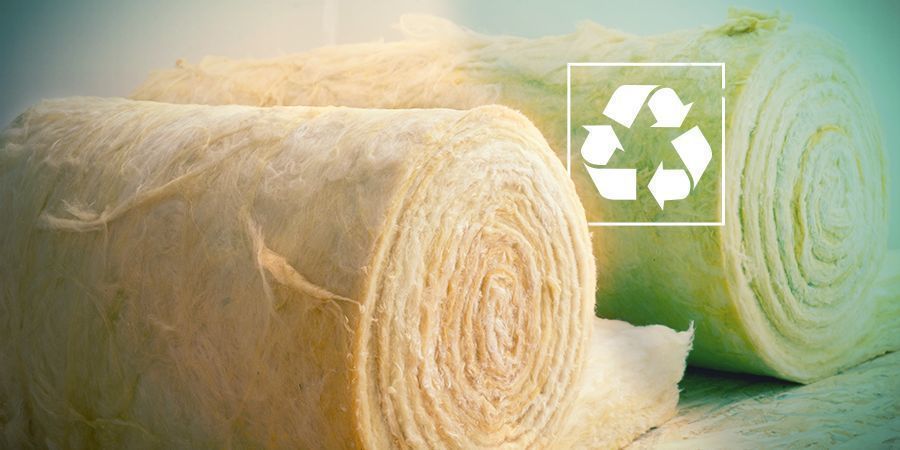
Not really. Reusing rockwool again for another grow can introduce pH fluctuation problems that are difficult to control. Moreover, leftover organic matter like roots and leaf fragments decompose and cause further problems.
If you are keen to use your rockwool again, painstakingly remove all organic matter. Then, steam with a commercial steam cleaner or wall paper steamer at 100°C or hotter.
Generally, it is far easier to start new grows with fresh material and get rid of the old stuff. But where? Rockwool doesn’t biodegrade and can't just go to the landfill, but the Rockwool brand offers technologies for recycling used material.









 United States
United States

